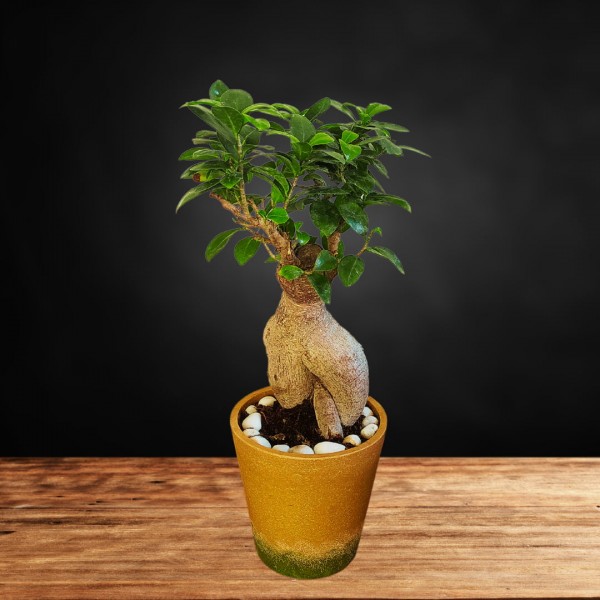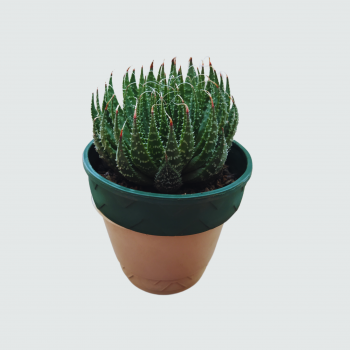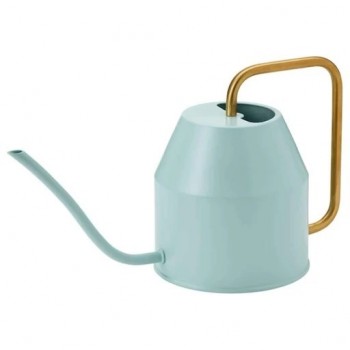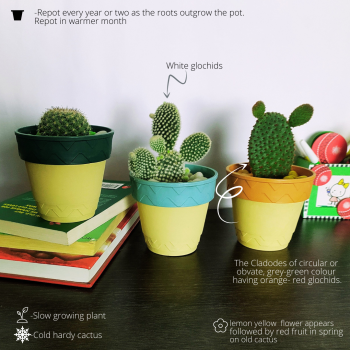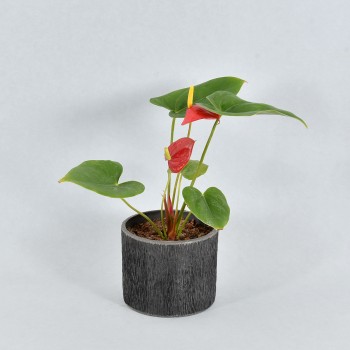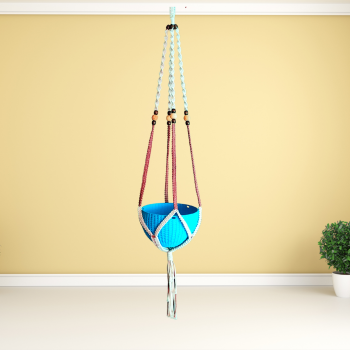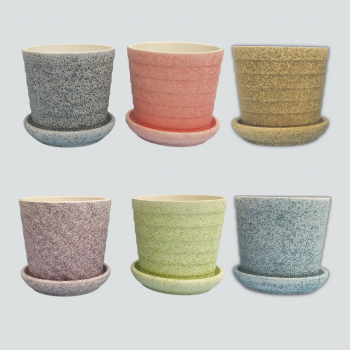Ficus bonsai is a tropical plant which is the most popular indoor tree species for Bonsai beginners. It is a perfect Home Decor or a personalized Gift option for your loved ones. It produces glossy, waxy leaves which are long lasting. The Ficus belongs to Mulberry plants or Moraceae.
Nature's beauty will make your room more aesthetically pleasing and will boost the flow of fresh air. Known as a low-maintenance plant, the Bonsai plant's soothing presence is known to bring peace and comfort. A ficus bonsai is among the most popular because of many reasons. Miniature artworks of nature, they can filter air pollutants and enrich the atmosphere with positivity and vibrancy.
This Bonsai is available in two different pots-
1. Brown Melamine pot which is light weight, durable, unbreakable and spacious with drainage hole. This pot is 5 inch in height and diameter.
2. WPC pot (Wood Plastic Composite Pot) Black colour, Wooden finish which is light weight, durable, unbreakable and spacious with drainage hole. This pot is 4 inch in height and 4.5 inch in diameter.
The Package contains 1 Ficus bonsai + 1 planter + Plant tracker
Specific References
The ficus is an indoor as well as outdoor tree. You should not place it in a shady area, since it requires a lot of light, preferably full sunlight. Keeping the temperature relatively constant is also important. Figs can endure low humidity due to their thick, waxy leaves, but they prefer higher humidity and need extremely high humidity to develop aerial roots.
Watering
Whenever the soil becomes slightly dry, give the Ficus generous amounts of water. The Bonsai Ficus enjoys soft water at room temperature and is tolerant of occasional overwatering. Maintaining humidity with daily misting is best, but too much misting can create fungal problems. The warmer the placement of the fig during winter the more water it needs. If it’s kept in a cooler place it only needs to be kept slightly moist.
Fertilizing
Liquid or Pellets fertilizer can be used every two weeks during summer.
Pruning
Trees need regular pruning to maintain their shape. Trim back to just two leaves after six or eight leaves grow. It is possible to reduce leaf size by pruning the leaves (defoliation). Some Ficus bonsai species grow large leaves naturally. One or two years of growth on the trunk of the Ficus will result in considerable thickening. The strong cuts that are necessary afterward don't affect the Ficus' health and new shoots will grow from old wood. Larger wounds should be covered with cut paste.
Repotting
Using a basic Bonsai soil mixture, repot your Ficus tree every other year during the spring. Ficus tolerates root-pruning very well.
Propagation and grafting
Cuttings can be planted at any time of the year, but they have the highest success rate during mid-summer growth. Air-layering will work best during spring, in April through May. In most cases, springtime is the best time for planting Ficus seeds.
Ficus trees can fuse by placing branches, roots, or trunks together and applying some pressure. This technique is known as approach-grafting and it can be used to form appealing structures. You can tie many young plants together to fuse them and build a single strong trunk. Fig tree branches and roots can also be grafted quite easily. If the growing conditions are ideal, you can even take aerial roots from one part of the tree and graft them into a different position. For faster healing, or closing of large wounds, young plants, shoots, or aerial roots can be grafted across wounds. An experienced grower can work on fig trees with a nearly unlimited range of creative freedom, which considerably increases the appeal of growing Ficus retusa as a Bonsai plant.
Pests and diseases
Mulberry plants are quite resistant against pests, but they are still susceptible to several issues depending on their location, and time of year, especially in the winter. Dry air and a lack of light weakens the Bonsai Ficus and often result in leaf drop. In poor conditions like these, they are sometimes infested with scale or spider mites. Placing customary insecticide sticks into the soil or spraying insecticide/miticide will get rid of the pests, but a weakened Ficus tree’s living conditions must be improved. Using plant lamps 12 to 14 hours a day, and frequently misting the leaves will help in the recovery process.


